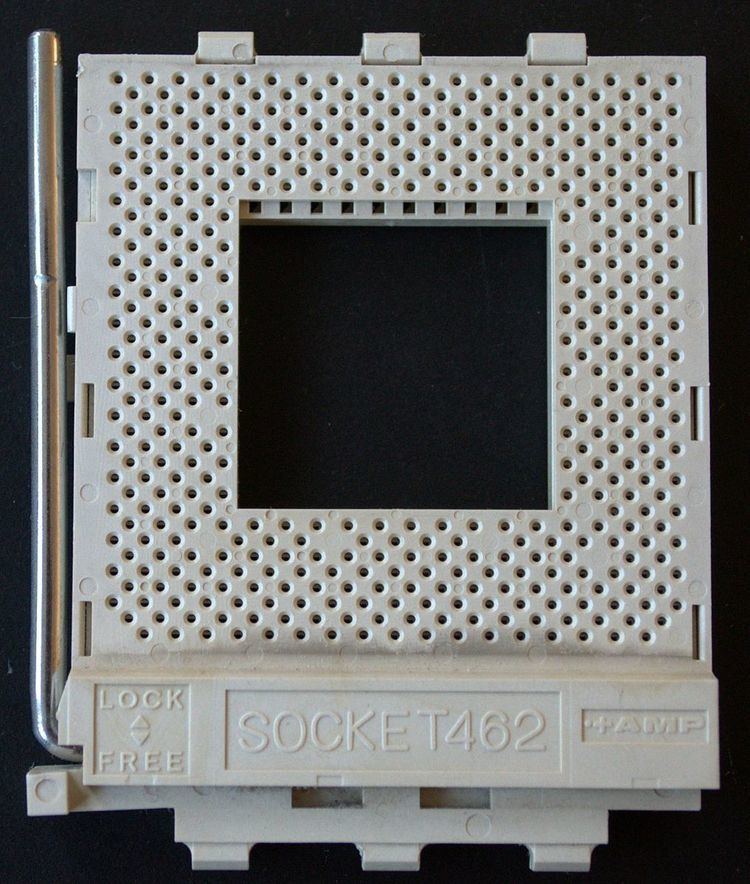Type PGA-ZIF FSB protocol EV6 | Contacts 462 Voltage range 1.0–2.05 V | |
 | ||
Chip form factors Ceramic Pin Grid Array (CPGA)Organic Pin Grid Array (OPGA) FSB frequency 200 MT/s, 266 MT/s, 333 MT/s, 400 MT/s | ||
Socket A (also known as Socket 462) is the CPU socket used for AMD processors ranging from the Athlon Thunderbird to the Athlon XP/MP 3200+, and AMD budget processors including the Duron and Sempron. Socket A also supports AMD Geode NX embedded processors (derived from the Mobile Athlon XP). The socket is a zero insertion force pin grid array type with 462 pins (nine pins are blocked in the socket to prevent accidental insertion of Socket 370 CPUs, hence the number 462). The front side bus frequencies supported for the AMD Athlon XP and Sempron are 133 MHz, 166 MHz, and 200 MHz. Socket A supports 32-bit CPUs only.
Contents
Socket A was replaced by Socket 754 and Socket 939 during 2003 and 2004 respectively, except for its use with Geode NX processors.
Technical specifications
Initially launched with 100 MHz FSB support in the earliest chipsets it evolved stepwise to faster 200 MHz FSB while maintaining pin compatibility throughout its lifetime. However, clock, timing, BIOS and voltage differences restrict compatibility between older chipsets and later processors.
Socket dimensions are 5.59 cm (5.24 cm without lever) x 6.55 cm or 2.2" (2.06" without lever) x 2.58".
Socket A mechanical load limits
AMD recommends that the mass of a Socket A CPU cooler to not exceed 300 grams (10.6 ounces). Heavier coolers may result in damage to the die when the system is not properly handled.
All socket A processors (Athlon, Sempron, Duron and Geode NX) have the following mechanical maximum load limits which should not be exceeded during heatsink assembly, shipping conditions, or standard use. Load above those limits may crack the processor die and make it unusable.
Those load limits are quite small compared to the load limits of Socket 478 processors. Indeed, they were so small that many users ended up with cracked processors while trying to remove or attach heatsinks for their fragile processors. This made installing non-standard or non-certified heatsink solutions a risky business.
